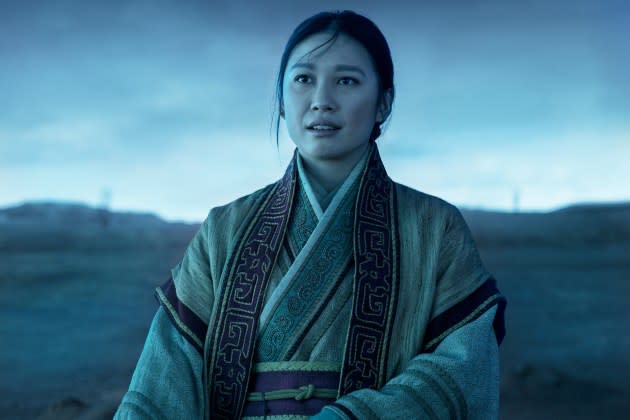‘3 Body Problem’ Proves Why TV Needs More Women in STEM

While numerous leading women representing scientists, technicians, engineers and mathematicians (STEM) have graced the screen throughout cinematic history, those pale in comparison to their male counterparts. Netflix’s “3 Body Problem” challenged this gender disparity and came out on top, dominating the charts for weeks.
According to Luminate, “3 Body Problem” has more than 3 billion minutes watched since its March release and spent seven weeks in Netflix’s Global Top 10. While the show features successful women in STEM, it’s worth noting Liu Cixin’s book, “The Three-Body Problem,” did not originally include strong female scientists like Jin Cheng (Jess Hong) and Auggie Salazar (Eiza González). The book centers on a male protagonist, Wang Miao.
More from Variety
Thankfully, the TV show adaptation chose to diversify its storyline by featuring female characters in STEM roles, moving away from a predominantly male-centric narrative. In the series, the Oxford Five crew replaced Miao’s character, with the group being led by two women, Jin and Auggie. By changing the main characters, the show provided much-needed representation for the story and facilitated a richer character development throughout Season 1.
This is a great example of how Hollywood possesses the potential to either sustain the gender disparity in STEM fields or contribute to its resolution.
Even today, women in these positions are not only underrepresented in the workforce, but also on screen. In February 2024, the Geena Davis Institute unveiled “Portray Her 2.0: An Analysis of 15 Years of Women in STEM On-Screen.” Ultimately, the report revealed a noticeable lack of representation overall.
Per the study, from 2018–2022, only 38% of STEM characters on screen were women. When focusing solely on lead roles, the percentage dropped significantly to just 13%, with a mere 7% representing women of color — with shows like “Grey’s Anatomy” contributing to a large percentage of this statistic.
“It’s a window into potential education and career pathways [for women],” Geena Davis Institute president and CEO Madeline Di Nonno says of the importance of representation on screen.
In 2023, the report stated that 72% of women said they wished there were more female STEM characters in movies and on TV, proving that representation is crucial for validating the capabilities of women and girls while also inspiring audiences to envision themselves pursuing similar paths.
In fact, female scientists reached out to Hong after the show aired to say, “Thank you, because we are never represented.”
Hong adds, “The more you put intelligent characters that are more than just an object or a pretty face on screen, the more people relate to them. They want to actually see stories and people that remind them of themselves, not some perfect untouchable being, which I think is the history of women in Hollywood.”
As to what platform is best at representing women in STEM, “it’s always been streaming,” Di Nonno says. According to the 2022-2023 “Boxed In” report, 50% of major characters on streaming platforms were women versus 46% on broadcast network programs.
The popularity of “3 Body Problem” demonstrates the commercial viability of investing in stories with strong female leads in STEM jobs, contrary to the misconception that such narratives have limited appeal. For example, the film “Oppenheimer,” which won the 2024 Academy Award for best picture, neglects to include Lise Meitner, the female scientist credited with discovering nuclear fission, a crucial element in the development of the atomic bomb.
In a world where the portrayal of male scientists are winning Oscars, Netflix’s “3 Body Problem” emerges as a triumph by commanding the charts, proving it should no longer be seen as a risk to put women in science, technology, engineering and mathematics in lead roles on the big and small screen.
Best of Variety
'Blue Velvet,' 'Chinatown' and 'Fear and Loathing in Las Vegas' Arrive on 4K in June
'House of the Dragon': Every Character and What You Need to Know About the 'Game of Thrones' Prequel
Sign up for Variety’s Newsletter. For the latest news, follow us on Facebook, Twitter, and Instagram.

